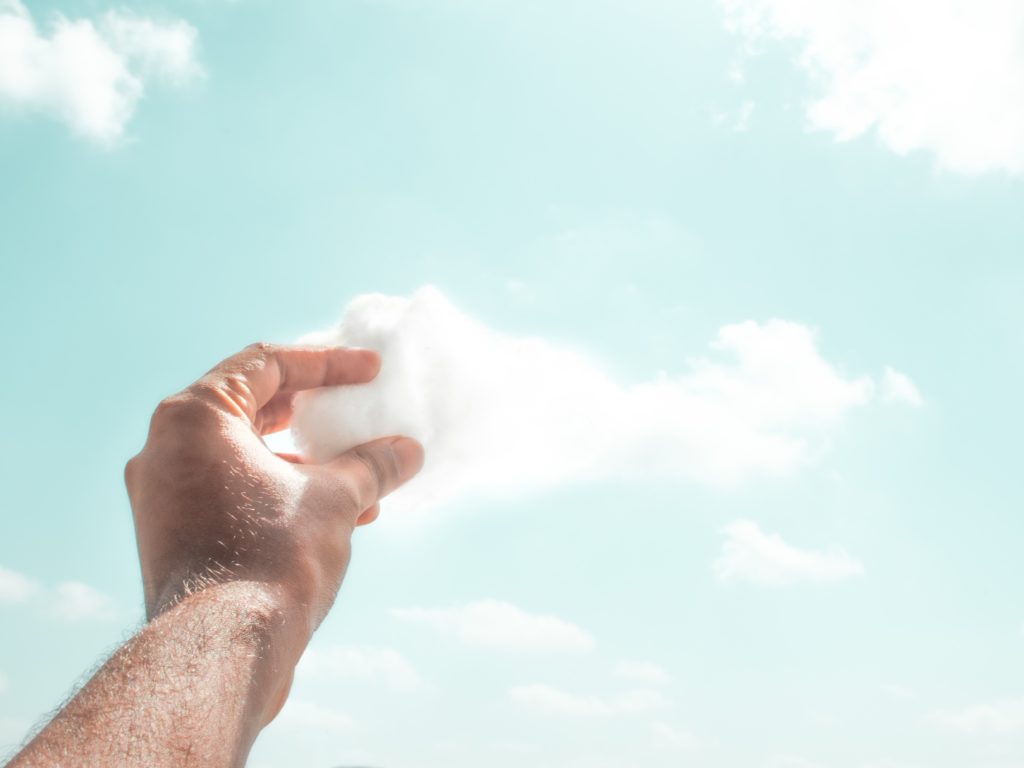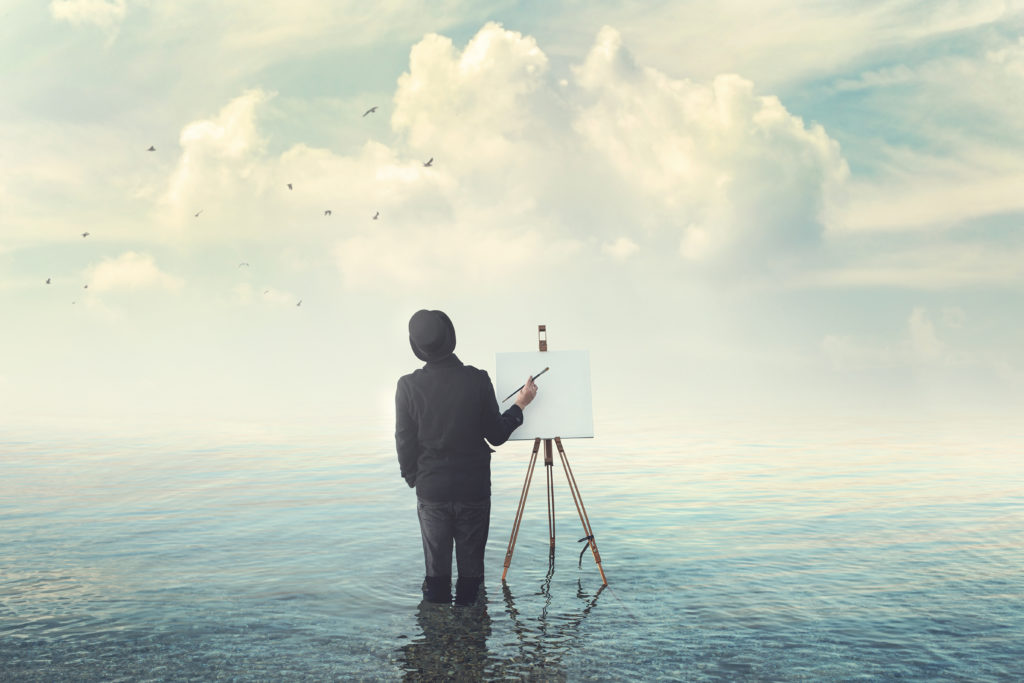“The creation of a single world comes from a huge number of fragments and chaos.” – Hayao Miyazaki.
Creativity is a powerful force. It’s won battles, spawned languages and civilizations, sparked oohs and ahs, and incited rapturous applause. It’s been the instigator of madness and turmoil, and is the root of many arguments and controversy. Throughout time, creativity has been an invisible force with no beginning and no end.
Yet at its core, creativity is just a building block.
It’s the point from which creatives begin to carve out ideas and set them into motion. This creative force inspires an inborn motivation to put one foot in front of the other in order to change the world and, in doing so, change ourselves. It is the key to personal, economic, and organizational growth.

Because of this power, and because it inspires an intrinsic desire, many push themselves to continually break their “creative mold.” In her global bestseller, BIG MAGIC (which in itself is a brilliant exploration on unleashing the creative genius within), Elizabeth Gilbert opens with the following two lines:
Q: What is creativity?
A: The relationship between a human being and the mysteries of inspiration.
The key word there is relationship. The essence of our creativity is both within us and around us.
Every one of us has the capacity for creativity, as it is a natural reaction to the relationship we have with our environment. It is an enigmatic form of communication that encompasses absolutely everything.
The result of that dialogue is an idea.
Whether or not you choose to express that idea is another story — and that’s where things get creative.
The Benefits of Creativity
To be creative, one must take the leap from idea to action, and the benefits of that pursuit are many. When unleashed, creativity:
- Improves mental wellbeing
- Improves respiratory function
- Improves cognitive development and focus
- Lowers levels of stress
- Helps aid in the recovery process of PTSD and TBI
- Institutes creative problem solving

So how do we get there? The answer is simple: practice. Those that are highly creative simply practice being creative.
Creativity is Brave Work
Creativity is the action of ideas set in motion. Every one of us has ideas, but those of us who have been dubbed “creators” are the ones who give those ideas a chance.
So many ideas have never left the battlefield of the mind because of fear. It takes guts to let an idea out of its cage and watch it take form (and quite possibly break), but you have to take the first step and give it a chance.
“There is a vitality, a life force, an energy, a quickening that is translated through you into action, and because there is only one of you in all time, this expression is unique. And if you block it, it will never exist through any other medium and will be lost.”– Martha Graham
To take the first brave steps into the creative unknown, here are a few accessible tools to throw into your inspirational toolbox:
Let go of perfectionism: The truth is that there is no such thing as perfect, and that is simply due to our biology because the human brain craves novelty. We are constantly searching for the next thing. This is due to something known as repetition suppression:
“When your brain gets used to something, it displays less and less of a response each time it sees it… The more familiar something is, the less neural energy we spend on it.”
– The Runaway Species: How Human Creativity Remakes the World, Anthony Brandt and David Eagleman
So let go of the need for perfection (whatever that is) and just create!
Get curious: Creators build upon their surroundings and history. Neuroscientist David Eagleman describes this as cognitive flexibility, which is the ability to take in moments of our lived experience and manipulate them into new forms.
The concept of an idea coming out of nowhere is nonexistent. Our ideas are results of our relationship to nature, whether or not that idea springs immediately or ruminates in silence for years.
“Creativity is just connecting things. When you ask creative people how they did something, they feel a little guilty because they didn’t really do it, they just saw something. It seemed obvious to them after a while.”
– Steve Jobs
Start a conversation: Speak to that neighbor you’re afraid of. Talk to your favorite grocer. Call your parents. Go to a class or speak to that intriguing person you also see at your local café.
The goal is to get shocked by a new perspective. Pay attention to your reaction, because this is the tipping point of inspiration. Follow that inspiration and start creating.
Find a mindfulness practice: As an artist myself, I have become well acquainted with the concept of the suffering artist. A certain fear arises — if I don’t suffer, will my work have merit?
Thankfully, the myth of the suffering artist is beginning to fade, and many artists are discovering that creation doesn’t have to come hand-in-hand with pain. In fact, we need to be healthy enough to have the endurance to produce the work that moves us.
Professor Kathryn Graddy of Brandeis University studied the effect of tragedy in the artist’s life, and made a striking discovery: suffering has a detrimental effect on art, interrupting workflow and causing a strain on productivity.
Incorporating a mindfulness practice — such as taking a walk, focused breathing, mindful cooking, or meditation — is a simple way to quiet the mind and allow space for your creativity to develop naturally.
“Happiness is seen as inner abundance, resourcefulness, the wellspring of energy within that allows us to serve, offer, create. If we don’t ever think we have enough, if we’re taught and believe we could never have enough, we’re not motivated to give. If we feel lost in the whirlwind of our own unhappiness, if we’re taught and believe we could never be enough, we don’t nearly have the energy to help others, to manifest. So happiness isn’t at all seen as leading us to indolence, but is the foundation of very great creativity of all kinds.”
Keep showing up: Because of fear of failure, many of us give up on our creative ideas before even attempting to try them out.
It takes bravery to go out on a limb with your ideas, but remember, many of the inventions of today are results of failure that inspired something unexpected. This includes things like fiberglass, Post-its, x-rays, Champagne, and penicillin, just to name a few.
As Thomas Edison said “I have not failed. I’ve just found 10,000 ways that won’t work.”
Get Comfortable Getting Creative
The truth is some people may seem more creative than others, but can one become more creative?
Yes, by embodying the artist’s mind. And the key to doing that is simple: practice.
Embodying the artist’s mind is not just a boon for personal growth, but if we offer the tools for creative thinking to youth in schools across the globe, we’ll be boosting the growth of a global economy by fostering creative young minds with the foresight to envision a brighter future.
Knowing that the tools to a creative process are right at your fingertips, you have only one thing left to do: create!
